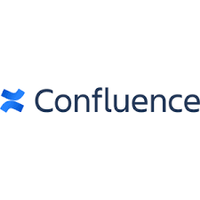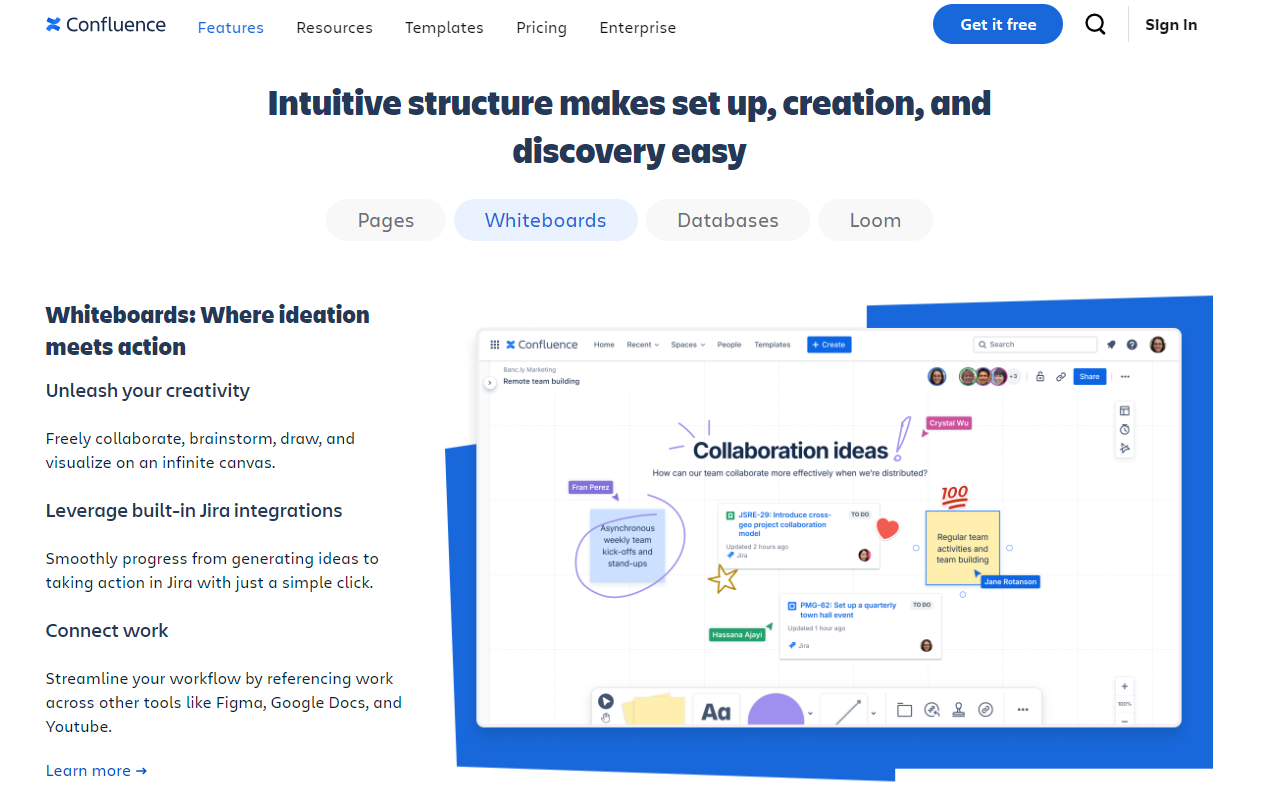Marketing and project management are crucial functions where small investments can generate massive returns.
Collaboration software is one of those investments that bring healthy returns.
It helps marketing and project management teams stay on the same page and achieve results.

Image Credit: Pexels
It boosts productivity, which translates into more robust sales.
Get ready to learn about collaboration platforms, how they work, and their necessity for your organization.
Get started today and see how Confluence will take your organization to the next level.

What is collaboration software?
Collaboration software refers to digital tools that help individuals and teams work together.
Users can tag other profiles, send messages, or hold real-time group discussions.

Types of collaboration software
1.
Instant messaging
As the name suggests, instant messaging tools let staff send and receive messages instantly.
They let marketers and project managers communicate in real time, even when operating from different locations.

Users can send one-on-one or group messages, and every participant gets notified about their message.
Most messaging tools let users control their notifications to avoid disturbance.
Videoconferencing
Videoconferencing platforms let marketing teams and program managers hold virtual meetings.

They facilitate face-to-face communication, even for remote staff working in different locations.
Staff can hold one-on-one video calls and participate in group video calls.
Users can share their screens and hold engaging meetings closer to an in-person experience.
Cloud storage
Cloud storage platforms likeDropboxandGoogle Drivelet your staff access vital information on the go.
They provide a centralized hub to store files and allow employees to access them anytime and from anywhere.
Cloud storage platforms prevent unauthorized access to your files with advanced encryption, passwords, and two-factor authentication.
Online whiteboards
Its common to find physical whiteboards in offices.
Individuals and teams use whiteboards to brainstorm, jot ideas down, and formulate business strategies.
These whiteboards foster collaboration and improve productivity for marketing and program management teams.
But how about remote workforces?
Can teams still brainstorm despite members being physically far away?
Yes, thats what online whiteboard platforms like Confluence enable.
They provide a virtual whiteboard multiple people can use simultaneously.
Why do marketing teams and program managers need collaboration software?
It unites employees
Collaboration tools help employees stay connected regardless of their location.
The share of remote employeesrose from20% in 2020 to 28% in 2023.
This growing workforce has boosted the demand for collaboration tools that help employees stay united.
It enhances productivity
Collaboration tools reduce inefficiency and accelerate productivity.
Everyone knows their contribution to a project and the deadlines they must meet.
Some legacy companies have rigid collaborative processes, with different teams using different communication apps and methods.
For instance, one team could communicate mainly via email and another via an instant messenger.
However, using a single collaboration platform solves this issue.
Confluenceprovides a unified collaboration platform for large organizations.
Everyone across different time zones can access company-wide information anytime.
Executives can easily track and manage projects without encountering information silos.
Everyone stays on the same page and knows what they ought to do, boosting organizational productivity.
It improves security
Collaboration tools have security features that prevent sensitive information from falling into the wrong hands.
Itll be dire if information about this new product is leaked to competitors.
A unified collaboration tool is one of the best ways to keep it under wraps.
These features keep your information secure in the long run.
It saves time and money
Collaboration tools reduce expenses associated with travel, office leases, and communication infrastructure.
They let employees work remotely and maintain the productivity of an office-like setting.
Employees can use videoconferencing tools like Loom to hold real-time meetings.
This option is more convenient than having everyone commute to the same office to hold meetings.
Slack lets marketing teams share real-time messages akin to in-person conversations.
Confluence lets employees brainstorm like they are in the same room, despite being physically far apart.
These tools reduce employee overhead costs and boost profits.
Improved project management
Collaboration tools centralize all tasks related to a project.
This tool allows everyone involved in a project to track their progress and manage milestones.
With a tool like Confluence, managers can create dependency maps to visualize the relationship between different project steps.
Everyone can easily manage deadlines and monitor each other’s progress, leading to smoother project execution.
This benefit is more pronounced in large organizations (100+ employees) where projects get complicated.
How to choose collaboration software for your organization
1.
Evaluate your needs
Identify your organization’s collaboration requirements.
How many employees need the tool?
What features do they need?
Do you need solutions that can integrate with the companys existing systems?
These considerations guide you in choosing the appropriate collaboration tool.
Conduct extensive research
Conduct extensive research based on your evaluation.
Compare and contrast which collaboration tools fit your requirements.
you could consult TechRadar reviews for detailed reviews of collaboration tools.
you’ve got the option to also check online forums and customer reviews to get honest perspectives.
Create an implementation plan
Create a detailed plan for implementing the collaboration tool in your organization.
How long do you expect the implementation to take?
Do you oughta migrate data from an existing platform?
Who will oversee the implementation?
All stakeholders affected by the collaboration tool should be aware of the plan.
Set up the tool
Register for the tool and set up employee accounts, permissions, and access levels.
The permissions and access control depend on your organizational policies.
At this stage, you’ll also migrate any needed data to the new collaboration tool.
Training and onboarding
Any newly adopted software requires training for your marketing, program management, and other departments.
Offer webinars or live training sessions to help end users become familiar with the tool.
Monitor and optimize
Constantly monitor the collaboration tool’s usage.
Seek feedback from staff on its effectiveness and request suggestions for improvement.
If feedback is overwhelmingly negative, dont hesitate to choose an alternative tool.
Many collaboration tools, including Confluence, offer 30-day trials to test features before making your final decision.
Utilize this trial period to monitor the effectiveness and seek employees feedback.
TechRadar Pro created this content as part of a paid partnership with Confluence.
The content of this article is entirely independent and solely reflects the editorial opinion of TechRadar Pro.